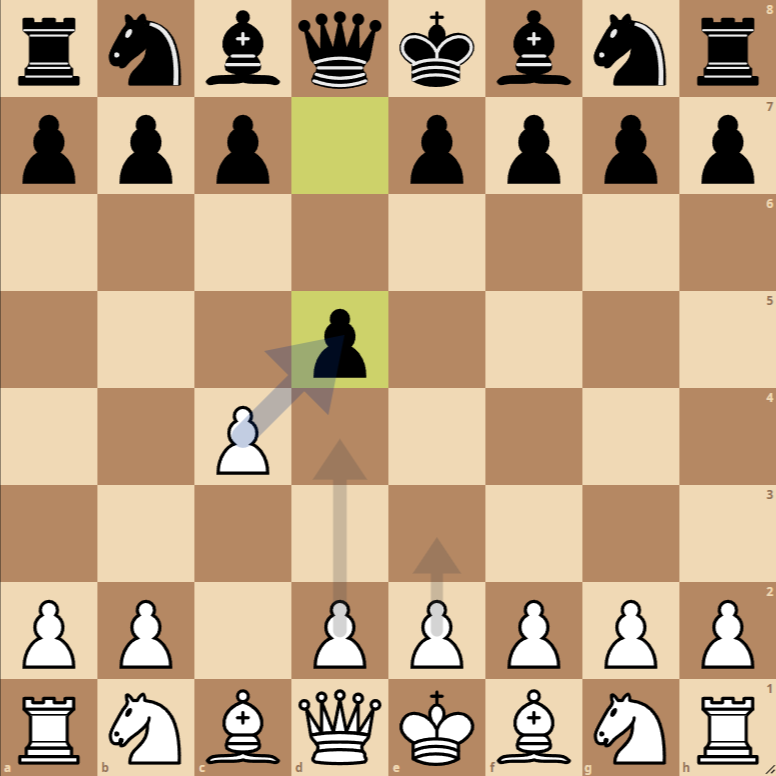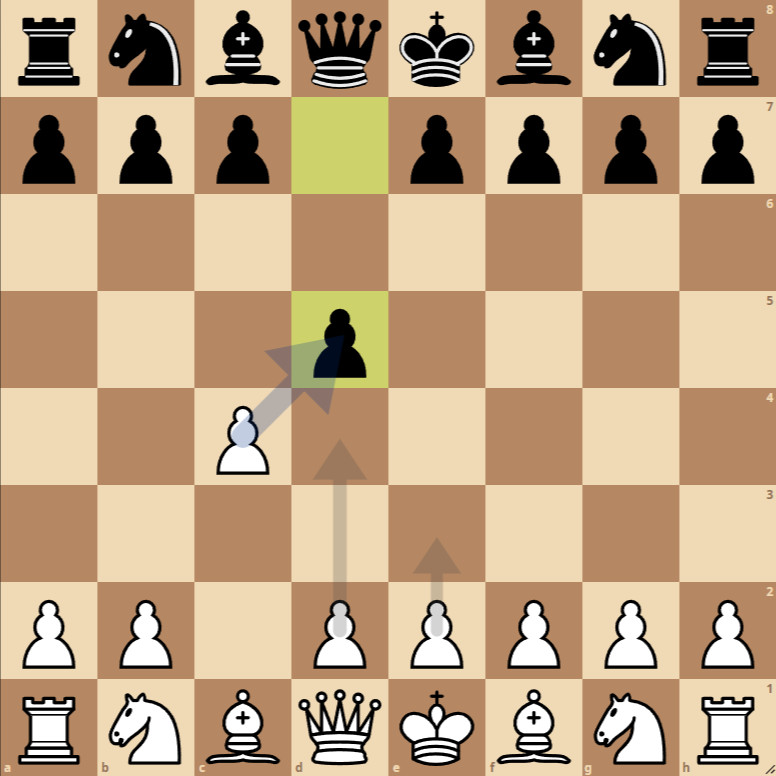How to Play the English Opening: Anglo-Scandinavian Defense

The English Opening: Anglo-Scandinavian Defense starts with the following moves in algebraic notation:
- 1. c4 d5: White plays c4, advancing the queen’s pawn one square, aiming to control the center and open up the diagonal for the bishop. Black responds with d5, immediately challenging white’s control of the center. This move also opens lines for the black bishop and queen.
Variations of the English Opening: Anglo-Scandinavian Defense
Variation 1: 2. cxd5
In this variation, white captures the pawn on d5. This move leads to an early exchange and can result in a more open game.
Variation 2: 2. Nc3
White develops the knight to c3, supporting the pawn on c4 and preparing to recapture on d5 with the knight if black captures the pawn.
Variation 3: 2. Nf3
By developing the knight to f3, white focuses on central control and prepares for kingside castling. This move also allows white to maintain flexible pawn structure options.
English Opening: Anglo-Scandinavian Defense
Initial Moves: 1. c4 d5
The English Opening, starting with 1. c4, is known for its flexibility and potential to transpose into various lines. By responding with 1… d5, black opts for the Anglo-Scandinavian Defense, a less common but intriguing choice that seeks to immediately challenge central control.
Strategies and Tactics for Both Sides
White (1. c4):
White aims to control the center from the flank with the pawn on c4.
The idea is to exert influence over the central squares d5 and e5 without immediately occupying them with pawns.
Flexibility is key; white can choose between classic pawn structures (d4 and e4) or maintain a more fluid setup.
Black (1… d5):
Black directly challenges white’s pawn structure.
This move seeks to open up the center quickly, possibly leading to a symmetrical pawn structure if white captures on d5.
Black must be prepared for rapid developments and possible transitions to central pawn structures.
Subsequent Moves and Considerations
1. cxd5:
White captures the pawn on d5.
This could lead to a more symmetrical pawn structure if black recaptures with the queen’s pawn.
White should be prepared to leverage their slightly faster development.
1. d4:
Advancing the pawn to d4, white aims to firmly occupy the center.
This move sets the stage for stronger central control and potential development of minor pieces into active positions.
Black may consider moves like …dxc4, forcing white to decide between immediate pawn recapture or further piece development.
Nf3:
By developing the knight to f3, white seeks to exert pressure on the center and prepare for safe kingside castling.
This move also keeps the option open to recapture on d5 with the knight if black decides to take on c4.
Black might respond with …c6 or …Nf6, developing their pieces while maintaining flexibility in their pawn structure.
Conclusion
The choice of the Anglo-Scandinavian Defense by black against the English Opening leads to a dynamic game with possibilities for both positional and tactical play. White, by maintaining flexibility, can opt for capturing on d5, central pawn advancement with d4, or early knight development with Nf3, each with its own strategic implications. Black, on the other hand, must be alert to transitions in pawn structure and seize opportunities for active piece development.

